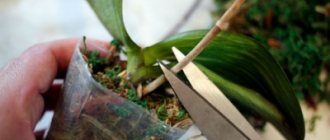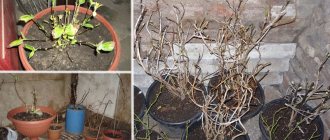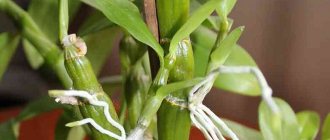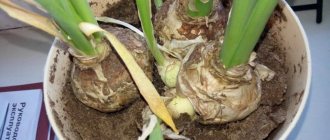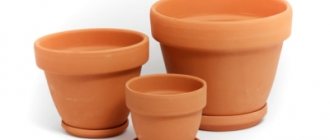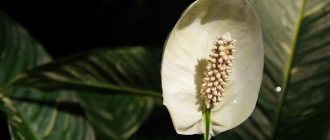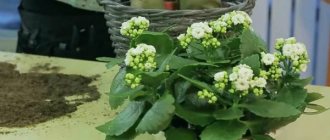Dried peduncle of phalaenopsis
Knowing an orchid grower how to prune an orchid will help him enjoy flowering almost all year round. In home breeding, the phalaenopsis orchid is most often found, which significantly outperforms other species that require a period of rest and recovery. Although not everyone agrees that it is necessary to speed up the flowering time of these plants, since the continuous production of offspring exhausts the orchid. But whether or not an orchid blooms a second time is decided only by its owner.
How to prune an orchid correctly so as not to harm it
After flowering, the orchid is left with a long and ugly stem on which there were flowers. My hands are just itching to cut it off. But the arrow cannot always be cut. They decide whether to trim a flower shoot, focusing on its appearance and the type of orchid. After flowering, some plants go to rest and the peduncle dries out, others may bloom again. In the second, the shoot is not cut off as long as it remains green.
Signs that your orchid will soon need to be trimmed:
- the green arrow begins to turn yellow or brown, the purple one becomes dark pink;
- instead of a peduncle, a dry stick sticks out;
- The shoot has been green for 6 months, but the orchid does not bloom.
When caring for an orchid, there is no need to be in a particular hurry when trimming flower stalks. Depending on the type of plant, the arrow can be “disposable” or can act as a platform for repeated flowering. If the flower stem begins to dry out, it is allowed to dry completely and only then cut off.
Continued growth of the cut arrow of phalaenopsis
How to prune phalaenopsis
The stagnation stage is the most appropriate time when you can safely prune a tropical crop. This stage is characterized by complete flowering and cessation of all active growth processes. It is important not to miss the moment: being late can lead to cutting off the orchid’s arrow during the budding phase.
Despite the high decorative value of phalaenopsis due to the multiple onset of the flowering phase during the season, this weakens the plant. Proper development is impossible without a period of rest, during which the crop will make a nutritional reserve for the future growing season. The answer to the question of whether an orchid needs to be pruned after flowering largely depends on the condition of the frog.
With faded inflorescences
To stimulate the re-formation of buds, beginners begin to remove the arrow while still withering inflorescences. You should not cut off the arrow of an orchid at home after flowering has not completely finished. Buds can form on it again, and a new flowering shoot can develop from the pruned shoot. If there is such a need, the top has begun to dry out, then it is enough to trim the flowering shoot above the upper growth bud - 1 cm higher.
Pruning an orchid after flowering
Orchids in general try not to be pruned in the generally accepted sense, therefore, in the rules for caring for these plants, the term “pruning” usually hides the principles of pruning the peduncle. But this is one of the key points when breeding orchids. Knowing how to properly prune an orchid after flowering and what to do afterwards to prevent the plant from getting sick will help the orchid grower preserve the flower and speed up subsequent flowering.
Even if the orchid is a species that blooms once a year and the stem dries out after flowering, there is no need to try to pull it out. The peduncle is cut at a distance of about 3 cm from the rosette. At the same time, in the future it will serve as a “handle” for the plant when transplanting. As always, the most popular phalaenopsis and its hybrids stand apart from other orchids.
Due to the almost year-round flowering, phalaenopsis has its own rules on how to prune a faded orchid. For this operation, you can use regular scissors or, if your hand is steady, a sharp knife. But it is very easy to damage the leaves of a plant with a knife. Another option is pruning shears. Specially designed for cutting branches, the pruner causes minimal damage to plant tissue. For phalaenopsis, this nuance is especially important, since it is quite difficult to correctly trim a peduncle that has not dried out but is laying new buds. Scissors compress the stem, damaging internal tissues, at a fairly large distance from the cutting site. An infection can easily penetrate into a damaged peduncle. Secateurs cut according to a different principle.
Trimming the peduncle of phalaenopsis
Aftercare and care of the plant
Cutting off the peduncle creates severe stress for the orchid, and therefore it does not need to be disturbed for several days. Further care after pruning is aimed at maintaining and restoring the plant’s strength for new flowering and does not differ from standard maintenance.
The orchid is in the dormant stage for up to two months, and in order for it to develop successfully after leaving it, it is very important to follow the following rules:
- create a temperature regime (optimally +24°C during the day, –+17°C at night);
- increase the intervals between waterings (the substrate must have time to dry completely);
- stop feeding;
- provide diffuse lighting that excludes direct sunlight;
- do not allow close proximity to operating heating devices;
- regularly spray leaves and aerial roots to maintain moisture.
When pruning in summer, the plant must be shaded from the bright sun. For this, light-transmitting curtains, blinds or matte film are used.
To stimulate the formation of new inflorescences, after pruning the orchid, it is recommended to replace the substrate. During transplantation, the root system is examined. All dried and brown roots must be removed. The cut areas are treated with disinfectants: iodine, brilliant green, cinnamon powder or activated carbon. This will protect the plant from infection and putrefactive bacteria.
The adaptation period is 4-5 days. Watering is stopped, occasional spraying is allowed to maintain moisture. Fertilizing should be done when active growth of green mass begins. A couple of months or a little later after pruning (with proper care) the orchid will bloom again. The time for the release of new flower stalks depends on the variety, type and condition of the plant.
What to do with the peduncle of phalaenopsis
The arrows of phalaenopsis in most cases remain green, and this causes concern among novice orchid growers. They cannot understand whether it is possible to cut the stem or whether they should wait until it begins to die on its own.
As a rule, phalaenopsis orchids are pruned immediately after flowering, but they do this if they want it to bloom again quickly. Having additional dormant buds on the shoot, the orchid begins to grow new shoots from them. In this case, the peduncle is cut 0.5 cm above the dormant bud. If you cut lower, the bud may dry out.
Since usually the peduncles of phalaenopsis continue to remain green, then, theoretically, they do not need to be trimmed. But in this case, the shoots grow and branch, because from the buds on the stem they form not new flowers, but new peduncles. It is difficult for a plant to maintain such structures, so how to prune an orchid after flowering is most often determined by eye and your own taste. Typically, pruning is done by two-thirds, leaving the plant a third of the stem for the next flowering. Cut off the peduncle with a disinfected tool.
Important! If the stem does begin to dry, there is no need to try to “save” it by cutting off the drying part. The plant simply decided to go on vacation. Moreover, even a drying peduncle still supplies nutrients to the flower.
When the arrow dries, you need to wait until it turns into a lignified “straw”, and only then remove it. In case of complete removal of the peduncle, you will have to wait several months until the phalaenopsis forms and grows a new arrow, but sometimes this is necessary for the health of the plant itself.
Methods for removing flower stalks
Pruning of any plant is carried out in compliance with certain rules that take into account its type, characteristics of growth and development, orchids are no exception. When purchasing a flower in a store, you need to find out from specialists as much information as possible about its type and conditions of maintenance.
There are two ways to cut off orchid flower stalks:
- the entire arrow is cut off at the base;
- Only the part on top where the buds were is removed.
In the first case, the entire branch is cut off, leaving only a small stump 2-3 cm high so as not to injure the plant. In the second option, only the dead part is used, and the cut is made at a distance of 2.5 cm from the upper living bud.
Only sluggish peduncles that have changed color from green to pink or yellow must be removed.
If a live stem is caught under pruning, it must be placed in water. Perhaps a baby will appear on it after a while. During the hot summer, the chances of getting a young flower are very high.
When growing orchids, a picture is often observed when the plant has live flower stalks for a long time, but is not going to bloom and looks unaesthetic. In this case, stimulating pruning should be done, after which flower buds will wake up, new shoots will form or children will begin to grow.
The choice of time of year is of great importance for stimulating pruning. Early spring is favorable for resumption of flowering, and in hot summer there is a high probability of plant reproduction.
To properly trim an orchid, you first need to carefully inspect it. The location of the cut is determined by dividing the stem into three parts, then finding the upper living dormant bud in the lower section. It should be cut off above it at a distance of 2-3 cm. With this method, the upper living piece of the peduncle will retain moisture and nutrients for the development of a new shoot.
When deciding to carry out stimulating pruning, it is necessary to take into account that the result is not guaranteed, and in some cases this slows down the formation of new buds.
Caring for a trimmed orchid
Before pruning, in addition to tools, you need to stock up on products that will cauterize the cut site and prevent pathogenic bacteria from penetrating inside. Activated carbon, iodine, brilliant green, potassium permanganate or cinnamon are used as such agents. After the orchid is trimmed, the cut is lubricated with a disinfectant solution or drying powder is rubbed in. In some types of orchids, the peduncle is hollow inside. In this case, the cut must be sealed with beeswax to prevent water from getting inside or pests from entering. Getting rid of uninvited residents who have settled inside the stem is much more difficult than driving them out of the leaves.
Caring for an orchid involves more than just replanting and cutting the flower stem. When replanting, the dried and rotten parts of the rhizomes are cut off from the plant, leaving only the roots that have a green or gray appearance. But this may not be enough. It happens that an orchid does not bloom for several years, as it is overloaded with green mass. In this case, cut off excess leaves. And here it is especially important to know how to trim the leaves of an orchid. Improper pruning can destroy the plant.
Cut flower stalk of phalaenopsis
How to trim orchid leaves correctly:
- Always cut off the lower leaves.
- When starting pruning, the leaf is cut along the midline and torn to the stem.
- Gently tear off the halves from the stem with your hands.
- Do not water the orchid for several days, allowing the wounds to dry out so that the orchid does not rot.
Do the same with dried and yellowed leaves. If the leaf is green but flaccid, you should wait, perhaps it will gain elasticity. And if it does start to turn yellow, you need to wait until it completely dries and cut it off. Under the removed leaves, anything can be found: from young aerial roots to a new shoot that has begun to form.
What does pruning include?
Orchid pruning - removing the peduncle . When it dries out, it is removed. Sometimes it happens that after flowering is completed, the shoot instantly turns yellow and dries out. The reasons may be different - lack of nutrients or natural old age. Read more about what to do next with the southern beauty after it fades in a separate article.
In this state, the plant no longer needs the peduncle, so you can cut it off without fear. After some time, a new shoot will appear at the cut site.
How do you know if you need to remove the peduncle?
First you need to do a visual inspection of the peduncle. It is recommended to pay attention to the shade, general condition, and behavior. Signs of drying out are :
- Change in color: pallor, yellowness appears, and may even become brown or brown.
- The form is lost.
- The peduncle resembles a dry branch.
- Withering occurs.
- For 6-7 months the peduncle is in the same state.
When completely dry, pruning is allowed. But, if the arrow is not completely dry, then you need to wait with the procedure. It will still play its role as a deliverer of moisture and various substances.
Important! Untimely removal will stress the plant, and the recovery period may take a whole year.
The green tip is a possible sign of future flowering. If present, pruning is not recommended. The flowering shoot should also not be touched if it has swollen buds. It is only possible to remove the dry part.
Three options for handling the remaining green flowering shoot:
- There are gardeners who cut off the arrow of the peduncle and place it in a glass of water. After some time, babies form on it.
- There is an option for stimulating pruning, but it is carried out in the spring. This type of procedure encourages the phalaenopsis to procreate.
- An option is also possible that does not include the cut of the arrow. The green peduncle often produces new flowers. Formation does not occur quickly, within 2-3 months after the previous flowers fall off.
Does the plant need pruning after it has flowered or not?
Proper pruning is beneficial for the plant. It helps preserve the flower’s moisture, nutrients and decorative properties.
This procedure allows the plant to rest, since during the flowering period almost all its strength is depleted. After pruning, the orchid blooms again, forming new and healthy buds.
Popular articles Pear fruits are rotting on a tree - what to do
This manipulation is necessary to prevent the appearance of parasites and diseases. Pests often grow on dry arrows.
The main disadvantage of pruning is the risk of harm. It is necessary to choose the right timing, follow all recommendations and use disinfected instruments.
Before carrying out the procedure, you should weigh the pros and cons. If possible, it is better to consult a specialist.
First home care
For the first few days, you should not disturb the delicate flower too much, as this is a difficult “operation” for it. If pruning is carried out in the fall, this coincides with the winter dormancy phase, when the plant slows down its growth and development.
In order for the orchid to continue to bloom and delight with new flowers, you should take good care of it after circumcision:
- Water only after the substrate in the pot has completely dried.
- Do not give any fertilizing for 2-2.5 months during hibernation.
- During the day, maintain the temperature in the room no higher than 25°C, and at night – no lower than 14°C.
- Avoid drafts in the area designated for the orchid.
- Lighting should be moderate; direct sunlight should not be applied to the plant. If pruning took place in the summer, it is advisable to create a small shadow for the flower using some light translucent material.
- Do not place the flower near heating appliances.
Before you start growing flowers, you need to learn a little about them and how to grow them. Some of them require a lot of care and protection. Orchids are tropical plants of their kind; they have taken root well among flower growers around the world, including in Russia. But to make them feel at home, you need to put a lot of effort into their care.
Prolonging flowering by pruning above the bud
Trimming the flower stalk above a dormant bud does not prolong the flowering of phalaenopsis, but shortens the periods between flowering due to the fact that the orchid does not waste time and energy on forming a new flower stalk.
Advice! If an orchid has been growing on an old substrate for several years or has problems with roots, then the plant’s dormant period can be used to transplant it into new soil.
How to trim: step-by-step instructions
In order for the orchid to tolerate pruning well, it is important to follow the rules, which will reduce the risk of damage to the plant.
Preparing the necessary tools
If you use scissors for trimming, you cannot avoid damaging the leaves or stem of the orchid. It is best to use garden pruners. Before use, the pruning shears must be disinfected with vodka or cologne.
Selecting a location
You need to clearly understand where the cut needs to be made. Phalaenopsis often have long flower stalks, and buds appear only at the very top. There are two trimming options here:
- if you are not bothered by the size of the peduncle, then we leave everything as it is;
- if you are not satisfied with a long peduncle, then 1-2 cm above the developed bud.
You can trim above the 2nd or 3rd bud located on the peduncle. The closer to the base of the rosette the pruning occurs, the more flowers grow on the side shoot.
Select an option
If there are dormant buds on the peduncle, then the cut is made 2-3 cm above these buds. This pruning will slow down the growth of the new shoot. The orchid will spend energy and resources maintaining the old arrow. The choice of what to do lies entirely with the grower.
Algorithm of actions
Trimming must be done in the following sequence:
- We take a disinfected tool and cut off the dry part.
- The height of the stump left should be about 2 cm.
- The cut is sprinkled with charcoal to prevent infection. And then it needs to be cauterized with wax.
- Dry leaves and roots are removed in the same way, but without using wax.
- There is no need to water the orchid for two weeks. At this time, she is going through a recovery period, and it is better not to disturb her again.
Video about proper trimming of an orchid peduncle:
Care after transplant
To grow an orchid, you need to carefully care for it. The flower is not like other indoor plants, since it comes from the tropics, so it is better to choose a different growing principle.
During the growing process, you should pay attention to the following nuances:
- Observe the mode and method of watering.
- Feed the plant during its growth period.
- Prepare the right soil and collect a quality substrate.
- Monitor the condition of the stem and root.
Caring for a transplanted orchid
Additionally, it is worth regulating the temperature. The plant should not receive too much direct sunlight. In general, you need to create a tropical climate for the flower.
Watering
It is especially difficult to monitor the water balance of the plant and water it correctly. If there is too much water, the roots will begin to rot, so the standard watering procedure should be modified:
- Place room temperature water in a bowl.
- Place the flowerpot with the flower in the container for 15 minutes.
- Remove the flowerpot and place it on a towel. Excess moisture should be absorbed by the fabric.
- Before placing the pot in the tray, make sure that the moisture through the holes in the bottom is completely absorbed by the towel.
Top dressing
In order for the plant to develop normal leaf mass, flowering to occur every year and babies to be planted, it is worth periodically “feeding” the plant with fertilizers of various classifications.
For fertilizing, you can use a variety of fertilizers:
- organic;
- mineral;
- to accelerate growth.
Feeding the plant during growth
Each type is used in accordance with specific instructions for doses and periods of fertilizer application. But the most popular option is mineral fertilizers, since they contain a lot of minerals and vitamins necessary specifically for orchids.
In any case, the dosage for the flower should be 1/10 of the standard. The timing of “feeding” is determined by the size of the plant and growth conditions. It is advisable to apply a certain type of fertilizer during the flowering period, and a week after - a different type of substance. The further schedule of “feeding” depends on the condition of the flower.
The soil
Many problems in the process of caring for an orchid arise if you prepare the wrong substrate for the plant. Novice flower growers even use ordinary soil for flowers. In fact, the orchid belongs to the family of epiphytes, so by its nature it must be attached to a wooden support by its roots.
Extraction from old soil
You can plant the plant in purchased soil. A floriculture store may offer several options, but it is better to prepare the substrate yourself. You need to mix dry, finely chopped pieces of bark and pieces of moss in equal proportions. Pre-soak the components in flower antiseptics to remove pests and insects.
An orchid is a very beautiful and unusual flower that requires proper care during the process of growth and replanting. You need to know how to remove the baby from the mother bush without harming the second specimen. Preparation and further actions significantly affect the condition of the plant. Proper care will help the orchid develop into a full-fledged flower after transplantation.
